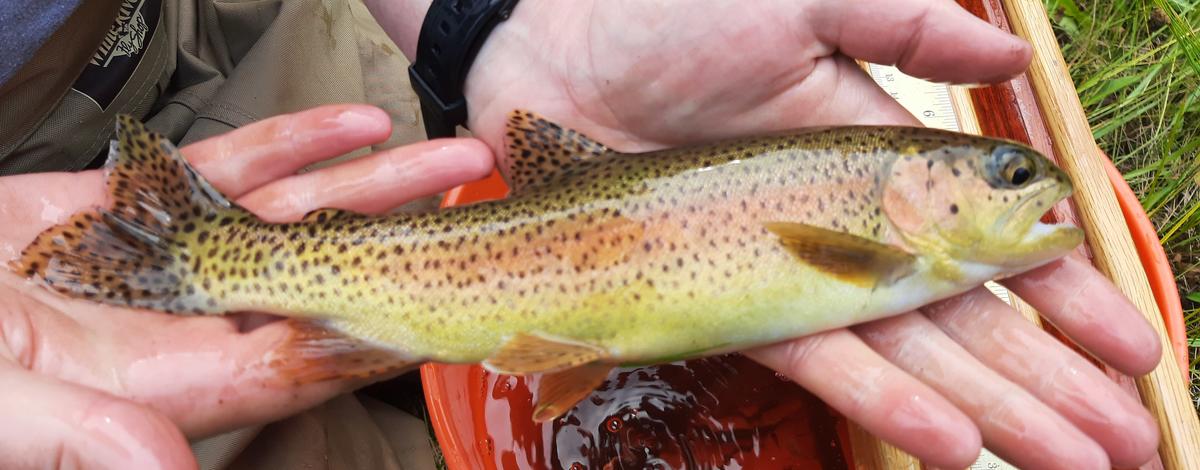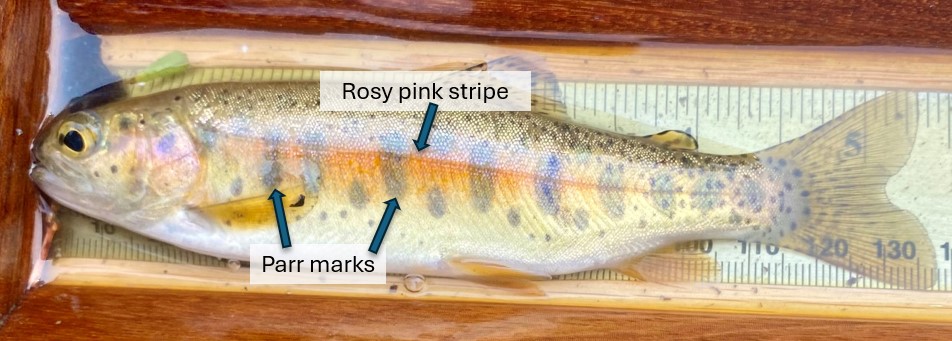Cutthroat trout may be the state fish, but the redband trout is itself a state gem. Redband trout are a subspecies of rainbow trout that are native to the interior portion of western North America. In the U.S., this includes Idaho, Oregon, Washington, California, Montana, and Nevada.
Redband trout are similar in appearance to rainbow trout such as the familiar rosy pink stripe from their gills to their tail. But there are a few differences too, such as larger, more rounded spots, and parr marks which persist into adulthood. Check out the May 2020 edition of the Wildlife Express magazine to learn more about redband trout.




